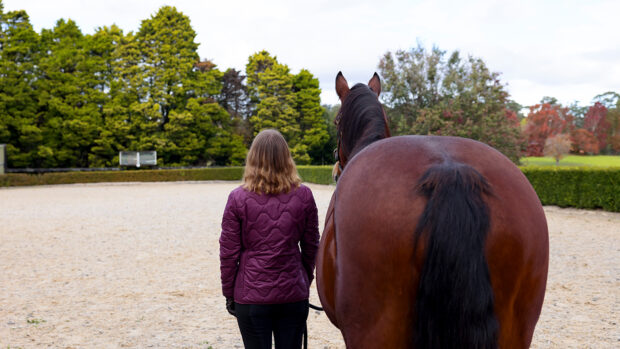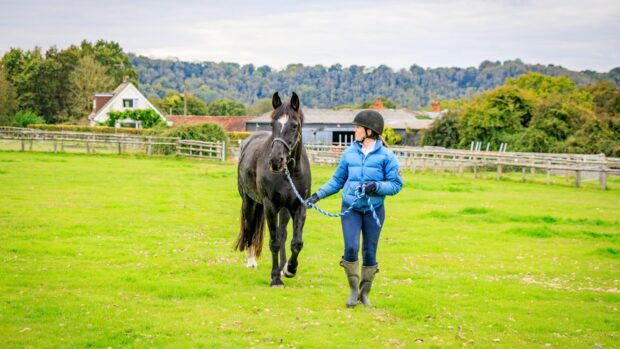Q: I have recently purchased a 10-year-old, 16.2hh Thoroughbred gelding who doesn’t like to be left on his own, either in the field or stable.
He shares his field with four other geldings, and as soon as they are brought in he will begin pacing up and down the side of the fence. I am worried he may hurt himself.
He will also work up a sweat pacing around his stable, although when the yard is quiet he settles down. Can you give me any advice?
Emma Kurrels, co-founder of equine behaviour specialists, Company of Horses, replies: A combination of innate disposition and previous experience will dictate how well a horse copes with separation and confinement. You do not mention your horse’s history, but information from previous owners may be useful.
Lacking anything more to go on, you will have to give him the benefit of the doubt and help him learn to cope with what are for him difficult situations.
If your horse rides out on his own, and you can lead him away from his friends without a problem, then you have a good chance of teaching him to cope with his anxiety in other areas.
On the other hand, if you have problem in either of these areas, it is likely that he has never lived or worked out of a group, in which case your horse may have a deep-rooted dependency. It must be considered whether it will do him more harm than good to try to change this. You must also ensure his environments are safe and secure.
If your horse is happy to leave the others in the field, then try to bring him out first, or at least with the last horse. In this way, you will be managing the situation to your horse’s advantage, rather than retraining the behaviour.
There are many reasons for anxiety in the stable, but it helps if your horse is in a stable next to a friend whom he can see and, ideally, touch. It is also good if his stable is not in a main thoroughfare of the yard, where constant activity will keep unsettling him.
New horses have a lot to adjust to – new environments, different hierarchies and routines, and so on. Some horses can take a long time to get used to such dramatic changes.
You can take the following steps to help him adjust and understand the process of being on his own:
- If you notice he is quiet in his stable, go in and give him a good stroke or groom. This should help him learn to remain quiet
- Try not to give him attention when he is anxious, as this could encourage self-fulfilling behaviour
- Gradually introduce very short periods in the field (five minutes or so) when he is alone



